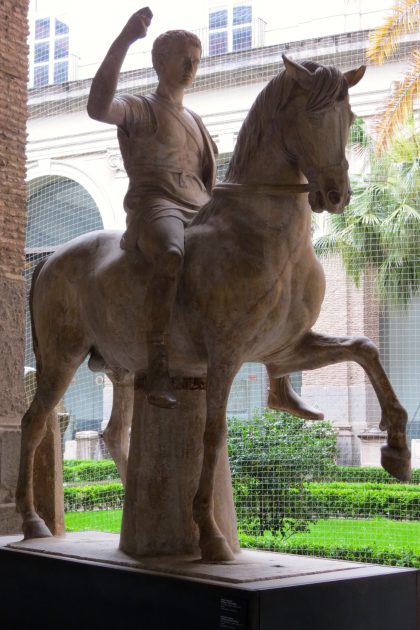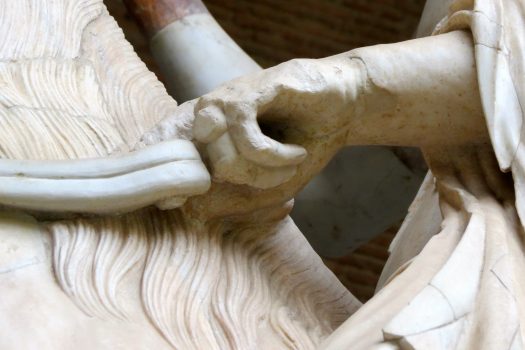- CountryItaly
- Town:Naples
-
Year of creation:62 - 79
- Rider(s):Balbus junior and senior, Marcus Nonius
Marcus Nonius Balbus was a Roman senator and proconsul of the late 1st century BC. He endowed Herculaneum with all sorts of facilities, including paying to rebuild its basilica after an earthquake. For these great favours the townsfolk named him patron of their city and filled the basilica with statues of him and his family, and set up a monument to him in a busy square outside the Suburban Baths. This has recently been restored though the statue is a reproduction (the original is in the Naples Archaeological Museum).
‘Balbus’ is a common cognomen in Roman times and literally means ‘stammerer’. Perhaps the man indeed had a stammer, or had stammered at some point in his life, but more likely it was a nickname that he had simply inherited, in the same manner that Roman emperors would sport the cognomen ‘Caesar’.
Evidence from inscriptions reveal further information about the man. Originally from Nuceria, he had settled in Herculaneum, where he had become a popular benefactor, partially funding the construction of a basilica. He was praetor, consul, and proconsul of the provinces of Crete and Cyrene in the time of Octavian/Augustus, becoming a tribune in 32 BC, and must have been very wealthy. People from Nuceria, as well as from the Cretan cities of Gortyn and Knossos, dedicated statues to the man in Herculaneum.
His funerary altar, which marked the place where he was cremated and was erected as a special honour, features an inscription that provides details about the equestrian statue. Marcus Ofillius Celer, who was then duumvir for the second time, ordered that the good deeds of M. Nonius Balbus should be honoured by placing an equestrian statue of the man in the busiest place of Herculaneum, paid for at public expense. Interestingly, this inscription also includes the full text that was to be inscribed in the base of the statue, which specified that the council of the people of Herculaneum had set it up.
In antiquity, it was expected that wealthy people contributed to the community of their own volition. Marcus Nonius Balbus was probably not exceptional in this regard. What is exceptional, though, is that Balbus is the only person from antiquity for which we have this ‘unusual amount of documentation, with evidence of benefactions, honours during a man’s lifetime, and his burial, in one and the same place’.
- Sculptor(s):Unknown
Originally erected in Herculaneum, now in the Archeological museum of Naples
























